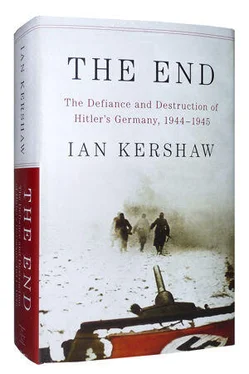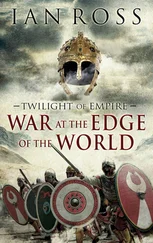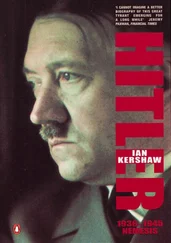107. IMT , vol. 11, p. 450 (Höß testimony); Orth, p. 312; Daniel Blatman, ‘The Death-Marches and the Final Phase of Nazi Genocide’, in Jane Caplan and Nikolaus Wachsmann (eds.), Concentration Camps in Nazi Germany: The New Histories , London and New York, 2010, p. 175; DZW , 6, pp. 647–8.
108. Orth, p. 307.
109. Orth, pp. 305–9. The conditions in Buchenwald during the final days and the liberation of the camp are vividly described by a prisoner at the time, Eugen Kogon, Der SS-Staat: Das System der deutschen Konzentrationslager , pb. edn., Munich, 1974, pp. 335–43.
110. Orth, pp. 312–28. The western Allies went to considerable lengths after the war to establish the precise routes of the marches, the numbers killed in each place they passed through, and the exact place of burial of those murdered. The extensive files are housed at the ITS, especially Bestand ‘Tote’ (83 boxes) and ‘Evak’ (9 boxes).
111. Greiser, p. 138.
112. Blatman, ‘The Death-Marches and the Final Phase of Nazi Genocide’, p. 174.
113. Unpublished ‘Reminiscences’ (1989) of Dr Michael Gero, Hamburg, pp. 111–12, most kindly sent to me by Mr George Burton, the son of one of the prisoners so casually and brutally murdered. What happened to the blond SS murderer is not known.
114. Blatman, ‘The Death-Marches and the Final Phase of Nazi Genocide’, pp. 176–7, 180–81.
115. Blatman, ‘The Death-Marches and the Final Phase of Nazi Genocide’, pp. 177–8; Daniel Jonah Goldhagen, Hitler’s Willing Executioners: Ordinary Germans and the Holocaust , pb. edn., London, 1997, p. 364; Greiser, pp. 136, 140, concludes that, as regards Buchenwald prisoners, non-Jews were no less exposed to the torment than Jews were.
116. ITS, Tote 80, fo. 00044a, Celle, (1946–7), estimates the death toll from the bombing raid at a thousand prisoners. Later estimates have varied wildly, but the most likely assessments seem to be 400–500.—Bernhard Strebel, Celle April 1945 Revisited , Bielefeld, 2008, pp. 114–15.
117. Daniel Blatman, Les Marches de la mort: La dernière étape du génocide nazi, été 1944–printemps 1945 , Paris, 2009, pp. 282–8 (quotation, p. 286). Strebel (whose book offers a careful assessment of the available evidence for the dire events in Celle) estimates (p. 115) around 200 victims of the massacre. See also ‘Hasenjagd’ in Celle: Das Massaker am 8. April 1945 , Celle, 2005, for eyewitness accounts and an assessment of how the town subsequently dealt with the memory of the massacre.
118. Blatman, Les Marches de la mort , pp. 318–61; Joachim Neander, Das Konzentrationslager ‘Mittelbau’ in der Endphase der nationalsozialistischen Diktatur , Clausthal-Zellerfeld, 1997, pp. 466–77; Joachim Neander, Gardelegen 1945: Das Ende der Häftlingstransporte aus dem Konzentrationslager ‘Mittelbau’ , Magdeburg, 1998, pp. 27–35, 40–45; Diana Gring, ‘Das Massaker von Gardelegen’, Dachauer Hefte , 20 (2004), pp. 112–26; Goldhagen, pp. 367–8; Robert Gellately, Backing Hitler: Consent and Coercion in Nazi Germany , Oxford, 2001, p. 246; DZW , 6, p. 648.
119. Zentrale Stelle der Landesjustizverwaltungen, Ludwigsburg, IV 409 AR-Z/ 78/72, fos. 1192, 1234; IV 409 AR-Z/105/72 1 fo. 96. I am grateful for these references to Dr Simone Erpel.
120. Both quotations in Greiser, p. 258. A fourteen-year-old boy on the march from Flossenbürg in mid-April recalled that ‘most Germans regard us prisoners as criminals’.—Heinrich Demerer, ‘Erinnerungen an den Todesmarsch aus dem KZ Flossenbürg’, Dachauer Hefte , 25 (2009), p. 154.
121. Goldhagen, p. 365, and p. 587 n. 23; Simone Erpel, Zwischen Vernichtung und Befreiung: Das Frauen-Konzentrationslager Ravensbrück in der letzten Kriegsphase , Berlin, 2005, pp. 176–7.
122. Cited Blatman, Les Marches de la mort , p. 286.
123. ITS, Tote 83, Hütten, fo. 00011a–b (1.4.46, though the evidence is weakened by the fact that the former mayor and Wehrmacht officer were signatories to the report).
124. ITS, Tote 4, Altendorf, fos. 00088a–00099b (July 1947).
125. Some instances are presented in Greiser, pp. 259–75, and in Delia Müller and Madlen Lepschies, Tage der Angst und der Hoffnung: Erinnerungen an die Todesmärsche aus dem Frauen-Konzentrationslager Ravensbrück Ende April 1945 , Berlin, n.d., pp. 56–7, 87, 89–90. Heinrich Demerer recalled sympathetic faces among civilians watching the marching prisoners and frequently being given bread by civilians, though he thought it was because he was so small, since the other prisoners received virtually nothing as they passed by.—Demerer, pp. 152, 154. Memories of the Ravensbrück death marches provide instances where children at the time recollected their parents putting water and boiled potatoes on the streets for prisoners. The former prisoners themselves, on the other hand, recall, not such instances of aid, but the rejection of the bystanders.—Simone Erpel, ‘Machtverhältnisse im Zerfall: Todesmärsche der Häftlinge des Frauen-Konzentrationslagers Ravensbrück im April 1945’, in Jörg Hillmann and John Zimmermann (eds.), Kriegsende 1945 in Deutschland , Munich, 2002, p. 198.
126. Blatman, ‘The Death-Marches and the Final Phase of Nazi Genocide’, p. 180; and see Goldhagen, p. 365.
127. Ardsley Microfilms, Irving Collection, Reel 1, R97481, Göring interrogation, 24.5.45.
128. This is the speculation of Rolf-Dieter Müller in DRZW , 10/2, pp. 102–4. Speer acknowledged in his post-war trial that he still had conflicting feelings and was after all that had happened even now ready to place himself at Hitler’s disposal.— IMT , vol. 16, p. 582. Schmidt, pp. 162–3, suggests that Speer sought to influence Hitler to appoint Dönitz as his successor, in the expectation that he himself would play an important role in the administration.
129. Speer, pp. 487–8.
130. BAB, NS19/3118, fo. 3, Himmler’s order of 24.1.45, reminding SS men of Hitler’s order of 25.11.44 (fo. 2) on required behaviour of officers, NCOs and men ‘in an apparently hopeless situation’.
131. Von Oven, pp. 647, 650 (19–20.4.45).
132. Von Oven, pp. 646–7 (18.4.45). Goebbels had also ensured that his diaries had been copied onto glass plates in an early form of microfiche.— TBJG , Register, Teil III, Elke Fröhlich, ‘Einleitung zur Gesamtedition’, pp. 37–47. His posthumous image was much on Goebbels’ mind at this time. Speaking to his staff on 17 April and referring to the new colour film Kolberg , which had been produced to bolster willingness to hold out and defy the odds, the Propaganda Minister reportedly stated: ‘Gentlemen, in a hundred years’ time they will be showing another fine colour film describing the terrible days we are living through. Don’t you want to play a part in this film, to be brought back to life in a hundred years’ time? Everybody now has the chance to choose the part which he will play in the film a hundred years hence. I can assure you it will be a fine and elevating picture. And for the sake of this prospect it is worth standing fast. Hold out now, so that a hundred years hence the audience does not hoot and whistle when you appear on the screen.’ The fifty or so men who heard this did not know whether to laugh or swear.—Semmler, p. 194 (17.4.45).
133. Von Oven, pp. 652–4 (22.4.45). See also Semmler, pp. 185–6 (25.2.45). According to the former Gauleiter of Süd-Hannover-Braunschweig, Hartmann Lauterbacher, Erlebt und mitgestaltet , Preußisch Oldendorf, 1984, p. 320, Goebbels told him at their last meeting, on 12 April, that all six of the children had cyanide capsules knitted into their clothes so that none of them could fall alive into the hands of the Russians.
Читать дальше












